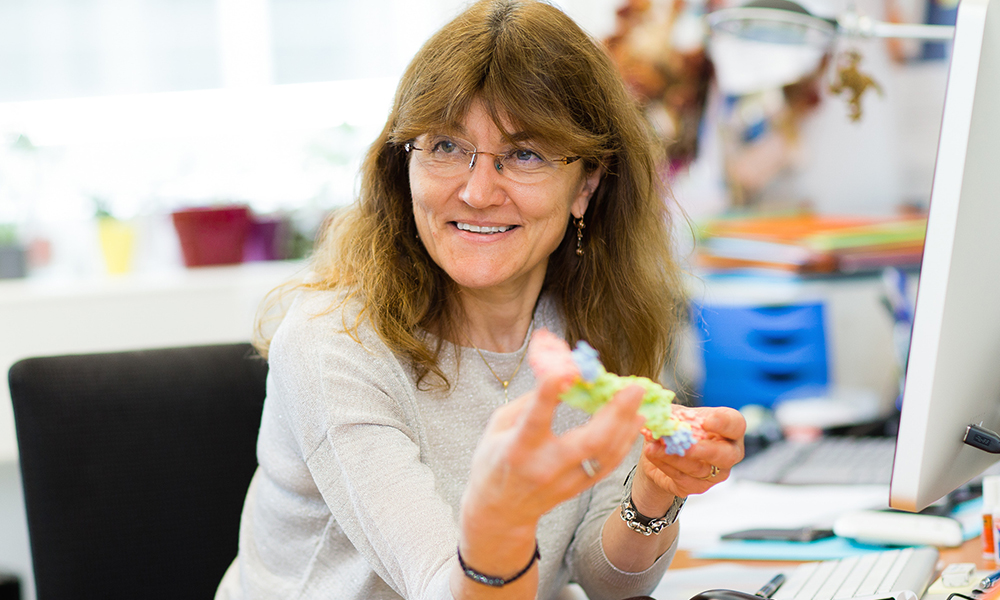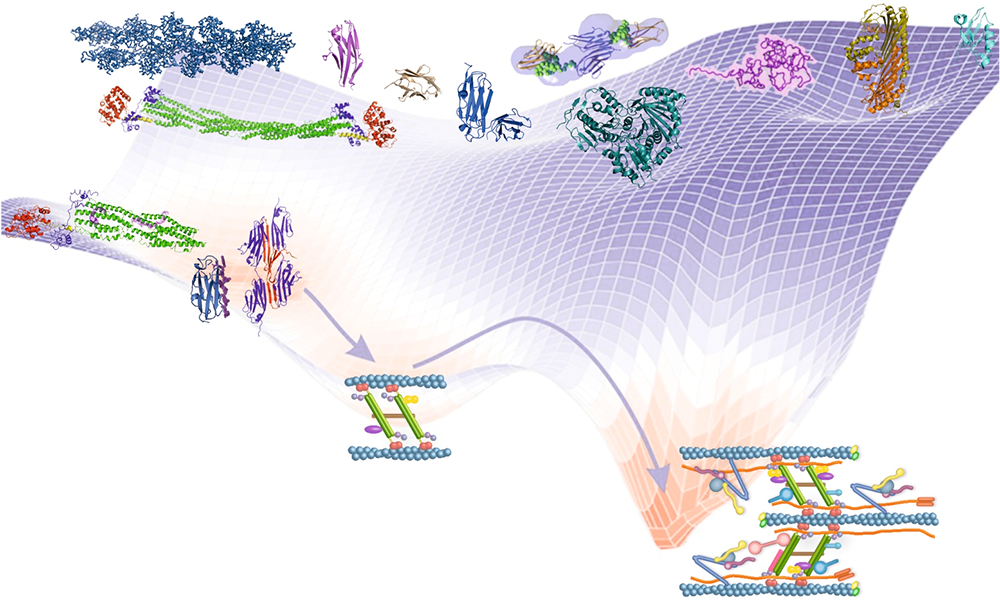
Meet the next Head of EMBL Grenoble
Kristina Djinović-Carugo was appointed as the next Head of EMBL Grenoble

Slovenian structural biologist Kristina Djinović-Carugo will join EMBL in July as the new Head of EMBL Grenoble. She is currently Head of the Department of Structural and Computational Biology and full Professor of Structural Biology at the Max Perutz Laboratories at the University of Vienna, and has a background in chemistry from the University of Ljubljana. We spoke to her about her background, research interests, and plans for EMBL Grenoble.
How did you become interested in science?
As far as I can recall, when I was a little girl, I always felt connected to the natural sciences – particularly to chemistry. My grandfather was a professor of chemistry at the University of Ljubljana and I remember that when we would have breakfast, I would ask him about how iron or other materials are made. I was curious about any explanation he could give me. He was also an astronomy enthusiast and I enjoyed stargazing with him. It felt obvious that I would study something related to the investigation of nature, like chemistry, biology, or physics. Then I specialised in structural biology at a time when there wasn’t much infrastructure or the techniques we have nowadays. I was very curious about this field, which was not developed in Slovenia at the time.
What is the focus of your research?
My research focuses on the structural biology of the Z-disk – the boundary between sarcomeres, the basic muscle contractile units. The Z-disk is known to be one of the most complex assemblies as it is made of more than 60 proteins. Each sarcomere is composed of two filaments which slide past each other to generate movement. All the sarcomeres have to work in concert in a very specific way in order to result in microscopic contraction. We try to understand how the Z-disk is structured and how information is transmitted from one sarcomere to another. We use integrative structural biology approaches on reconstituted complexes to study their structure and relate it to function.
Why are structural studies of the Z-disk important in terms of human health?
There are many mutations in the Z-disk which lead to different diseases affecting muscles (myopathies), particularly the heart (cardiomyopathies). Structural biology helps us to understand the function and mechanism of a molecule by determining its three-dimensional structure – and by extension, the change in function and resulting disorders caused by a mutation. With our research, we want to understand the molecular basis of these diseases. We are particularly focusing on the heart because cardiomyopathies are among the most deadly diseases worldwide. And we still lack a lot of understanding of these diseases at the molecular level.

What is your vision for EMBL Grenoble research and activities?
I believe that structural biology is in its golden age because we now have advanced infrastructure, like the extremely brilliant X-ray source at the European Synchrotron Facility (ESRF), and a whole range of very mature structural biology techniques, like crystallography, cryo-electron microscopy, and others, which can be combined with developments in stem cell biology and genome engineering technologies. EMBL Grenoble, being located on the European Photon and Neutron (EPN) science campus, is the right place to exploit all this potential. At the same time, it has the advantage of being part of EMBL as a whole, which is the cradle of fundamental molecular biology research with excellent scientific core facilities.
EMBL’s new programme ‘Molecules to ecosystems’ offers interesting perspectives for EMBL Grenoble, particularly in infection biology, but potentially also in other areas where we could develop structurally oriented studies that could be combined with complementary expertise from different sites and EMBL units. I’m also looking forward to learning more about the interesting established collaborations in Grenoble and plan to explore the potential to develop them further and establish new ones. I’m also keen on capitalising on the recent memoranda of understanding signed with French science institutions like CNRS or Inserm, which are a great step forward in strengthening connections with the French research community, as part of the EMBL mission to integrate European life science.
As for my research, apart from structural biology on reconstituted assemblies, I will explore in situ structural biology. I’d like to combine integrative structural biology approaches available at the EPN campus with the use of stem cells to understand how the Z-disk assembles during the maturation of the cell. We could then try to use engineering approaches, like CRISPR–Cas9, to stop specific processes at certain stages.
You spent several years at EMBL Heidelberg as a postdoctoral fellow and staff scientist. What memories do you have of your time there?
I have fantastic memories of my time at EMBL Heidelberg. I’m sure that EMBL is still a dream place to work and to be in. I had the opportunity to go back to EMBL Heidelberg last August, and my feet were taking me automatically from one level to another! I also passed by my old office, it was an amazing sensation!
You’ve been Director of a Laura Bassi Centre, which belongs to a group of research centres managed by top-level female scientists. What is your vision in terms of science and diversity?
We definitely need to be inclusive. I do believe that the primary criterion should be excellence, but nobody should be neglected or unfavoured because of gender, nationality, or any other characteristic. My team is also notoriously international, with people from almost all continents. It’s very cross-fertilising to work with people from different backgrounds – it offers a variety of ways of thinking about and doing science. When assembling teams, we need to fish from the global pool of talent.
What helps you focus on your work or think out of the box?
Running! Maybe it’s the adrenaline but often new ideas can emerge when I run. I also really enjoy nature and mountains. The city of Ljubljana in Slovenia, where I come from, is – quite similarly to Grenoble – surrounded by mountains, so maybe that’s why I need to see them. Sometimes I even mistake clouds for mountains in flat cities! The last time I came to Grenoble in October, some higher mountains were fully covered by snow – it was really beautiful.


